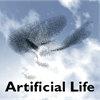从动力学到新颖性:一个基于Agent的经济系统模型
IF 1.6
4区 计算机科学
Q4 COMPUTER SCIENCE, ARTIFICIAL INTELLIGENCE
引用次数: 2
摘要
摘要现代经济既是一个复杂的自组织系统,也是一个创新的、不断发展的系统。然而,当代理论将其本质上视为一个静态平衡系统。在这里,我们提出了一个正式的框架来捕捉其复杂、不断演变的本质。我们开发了一个基于代理的经济系统模型,在该模型中,企业通过市场交易相互作用,并与消费者互动。生产函数由一对冯·诺依曼技术矩阵表示,企业在实施生产计划时考虑到其投入和产出的当前价格水平。价格是由总需求和总供应之间的关系决定的。在没有外部扰动的情况下,系统在其平衡状态附近波动。当利润高于正常水平时,就会引入新公司,当亏损持续时,新公司最终会被淘汰。公司数量的变化代表了一种反复出现的扰动。因此,该系统在两个层面上表现出动态:价格和产出的动态,以及系统规模的动态。该模型的基本结构力求逼真,但为了提高计算效率,它保持简单。最终目的是将其作为一个平台,对经济系统的结构演变进行建模。目前,该模型包括一种形式的结构进化,即产生新技术和新产品的能力。本文章由计算机程序翻译,如有差异,请以英文原文为准。
From Dynamics to Novelty: An Agent-Based Model of the Economic System
The modern economy is both a complex self-organizing system and an innovative, evolving one. Contemporary theory, however, treats it essentially as a static equilibrium system. Here we propose a formal framework to capture its complex, evolving nature. We develop an agent-based model of an economic system in which firms interact with each other and with consumers through market transactions. Production functions are represented by a pair of von Neumann technology matrices, and firms implement production plans taking into account current price levels for their inputs and output. Prices are determined by the relation between aggregate demand and supply. In the absence of exogenous perturbations the system fluctuates around its equilibrium state. New firms are introduced when profits are above normal, and are ultimately eliminated when losses persist. The varying number of firms represents a recurrent perturbation. The system thus exhibits dynamics at two levels: the dynamics of prices and output, and the dynamics of system size. The model aims to be realistic in its fundamental structure, but is kept simple in order to be computationally efficient. The ultimate aim is to use it as a platform for modeling the structural evolution of an economic system. Currently the model includes one form of structural evolution, the ability to generate new technologies and new products.
求助全文
通过发布文献求助,成功后即可免费获取论文全文。
去求助
来源期刊

Artificial Life
工程技术-计算机:理论方法
CiteScore
4.70
自引率
7.70%
发文量
38
审稿时长
>12 weeks
期刊介绍:
Artificial Life, launched in the fall of 1993, has become the unifying forum for the exchange of scientific information on the study of artificial systems that exhibit the behavioral characteristics of natural living systems, through the synthesis or simulation using computational (software), robotic (hardware), and/or physicochemical (wetware) means. Each issue features cutting-edge research on artificial life that advances the state-of-the-art of our knowledge about various aspects of living systems such as:
Artificial chemistry and the origins of life
Self-assembly, growth, and development
Self-replication and self-repair
Systems and synthetic biology
Perception, cognition, and behavior
Embodiment and enactivism
Collective behaviors of swarms
Evolutionary and ecological dynamics
Open-endedness and creativity
Social organization and cultural evolution
Societal and technological implications
Philosophy and aesthetics
Applications to biology, medicine, business, education, or entertainment.
 求助内容:
求助内容: 应助结果提醒方式:
应助结果提醒方式:


